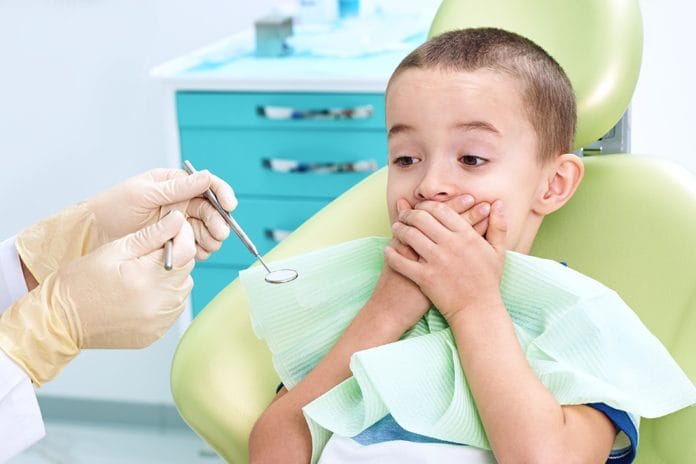Children are inarguably the most sensitive and anxious type of patient for dental professionals (DP). They don’t know what to expect from a visit, but many have fears of some sort of pain or other uncomfortable processes that they don’t understand. Researchers and dental professionals want and need to know which approach to caries treatment on primary teeth is the best for their practices and child patients.
Children’s and Parent’s Perspectives on The Acceptability Of Three Management Strategies For Dental Caries In Primary Teeth Within the ‘Filling Children’s Teeth: Indicated Or Not?’ (FiCTION) Randomized Controlled Trial- A Qualitative Study by Sarab El-Yousfi, Nicola P. T. Innes, et al. began as a breakdown of the strategies to discover which one was the most efficient and effective with children. Throughout the discovery time, the researchers realized that their study reflected much more than information on management strategies.
FiCTION Management Strategies
FiCTION stands for ‘Filling Children’s Teeth: Indicated Or Not’ and addresses caries in primary teeth and the processes DPs and hygienists take to address them. This particular study on FiCTION strategies was performed in England, through the NHS, and looks at carious lesions, pain, and infections present in children from ages three to seven and the effects one of the three management strategies had on them. Fissure sealants were applied to the permanent teeth.
Best Practice Prevention Alone (PA)
This strategy addressed prevention, such as toothbrushing, healthy diet, analysis, and intervention for permanent teeth. Correct brushing practices and dietary information were given to the child, and their current dental situation was analyzed. Issues found in the analysis would be addressed directly with the child and their guardian.
Fissure sealants were applied to permanent teeth, and fluoride varnish was applied to all teeth. There was no drilling, injections, extractions, or restorations placed on any teeth. This was a sort of prevention class given by the DP that gave the patients hands-on knowledge of the correct dental hygiene practices without intrusive care.
Conventional Treatment Plus PA
Conventional treatment includes the Prevention strategy as well as a shot of local anesthetic, removal of carious tissue, and placement of a restoration or stainless steel crown depending on the location of the tooth.
Biological Treatment Plus PA
Along with the Prevention strategy, biological treatments such as sealing the area with a fissure sealant or adhesive restoration material over any decay were applied using the Hall Technique. No injections or any other truly intrusive activities were done during this treatment.
Each child was placed in a group that received one of the treatments and were treated by their usual dentist and hygienist to document the average anxiety induced by these visits without increasing their fears of the unknown that would come from being treated by a stranger.
Discovery
The vast majority of each group described their particular treatment effective ONLY when the dentist was empathetic to their plight, explained everything they did, and related to the patient in a personal way. Each method was effective for everyone when their dentist and hygienists were seen as friends. It turns out that the children all had anxiety that lessened each time they visited the office, based solely on their relationship with the staff and the trust they developed through that relationship.
This discovery allows dental practitioners to treat their patients with any of the treatment methods based on their relationship with the child and address their particular needs as an individual, not with what the ‘majority’ says is the method for all children.
Each parent and child agreed concerning the quality of their care and the direct relationship the treatments had to the type of relationship they had with their caregivers. The only thing the parent and child disagreed on was the ‘coolness’ of the stainless crowns. The kids believed that the crown made them look awesome and described their friends as being jealous that they didn’t have one too. Parents were concerned that their child would be made fun of for the crown but also that they would look like horrible parents to other adults if their child had the hardware in their mouths.
Conclusions
There is no one-size-fits-all method for restoring a child’s primary teeth. In fact, the method didn’t matter as much as the positive relationship that a child forms with their dental practitioners. Of course, the children were afraid of the injections, the drilling, and other aspects of care, but the anxiety lessened each time due to the positive relationship. If the child had a neutral relationship with the caregivers, their anxiety either increased or remained the same, no matter the method. If the child views their relationship to the DPs as negative, their anxiety increased each time no matter what strategy was implemented.
Further study on the effectiveness of each treatment on the tooth itself is warranted, especially when each method can be equally effective with levels of fear and anxiety.
Before you leave, check out the Today’s RDH self-study CE courses. All courses are peer-reviewed and non-sponsored to focus solely on high-quality education. Click here now.











